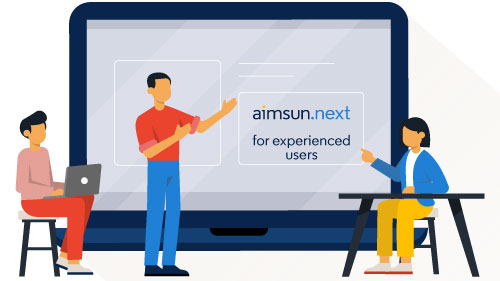- Solutions
- Innovation
- Software
Get Aimsun Next
Use Aimsun Next
About Aimsun Next
- About
Aimsun Next Use Aimsun Next Training courses
Training courses
Whether you are a beginner or a seasoned pro, we have a training path for you: our highly qualified trainers give hands-on courses all over the world, ranging from core skills to advanced programming for research.
We also offer in-company training, and can customize course content to suit your needs.
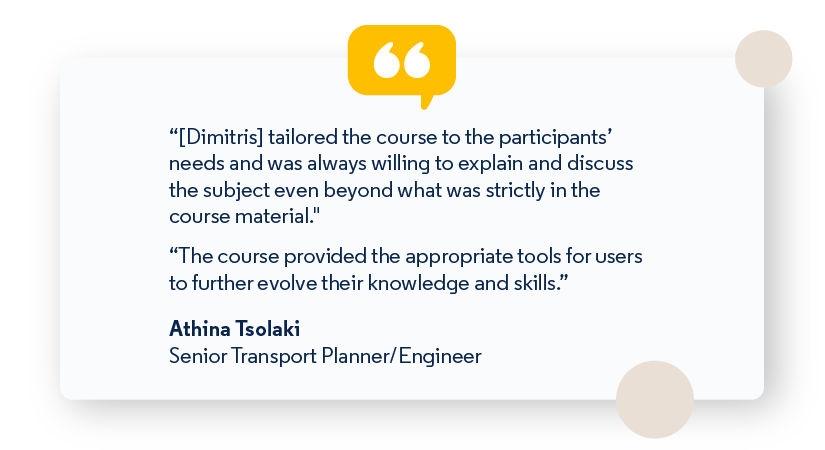
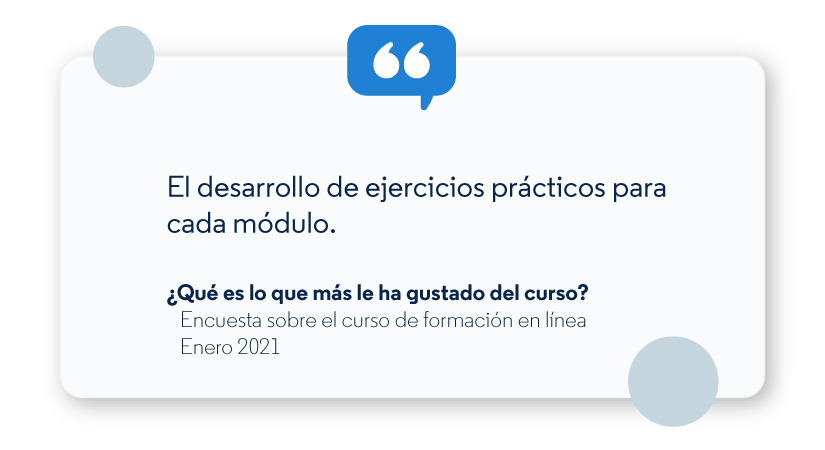
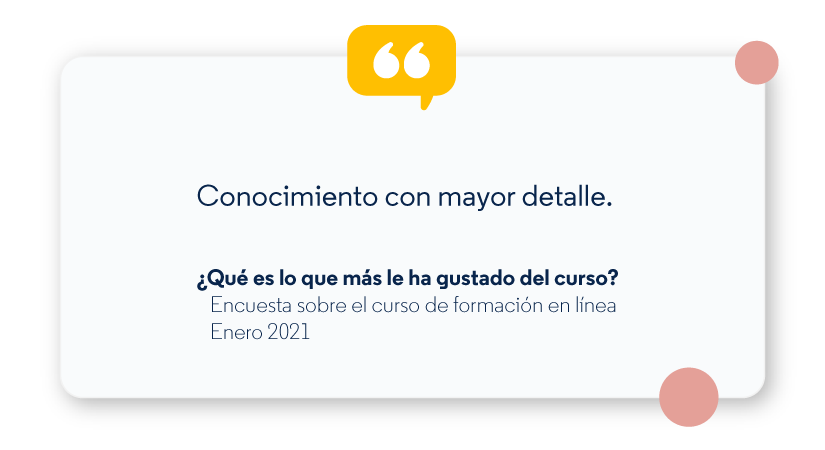
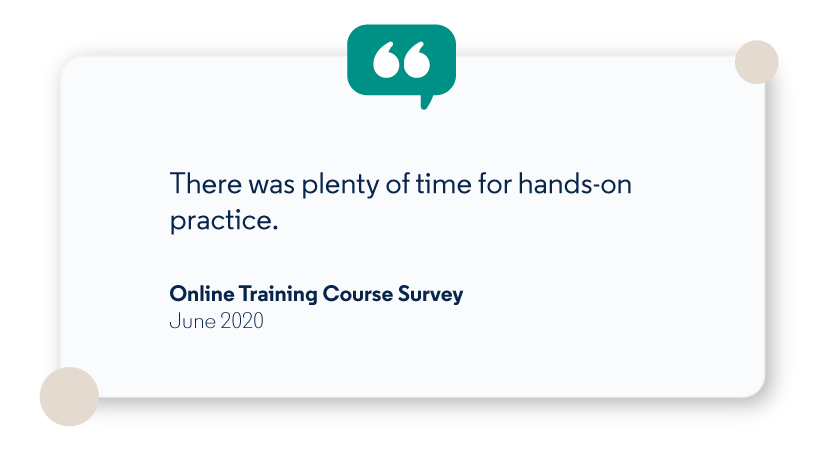
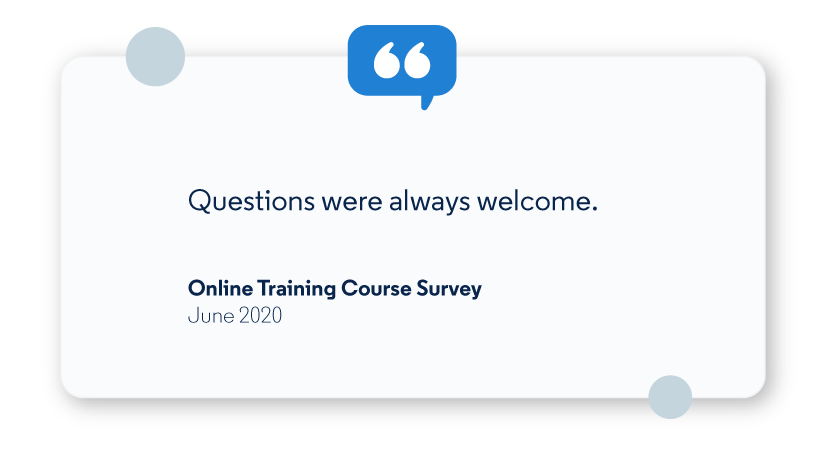
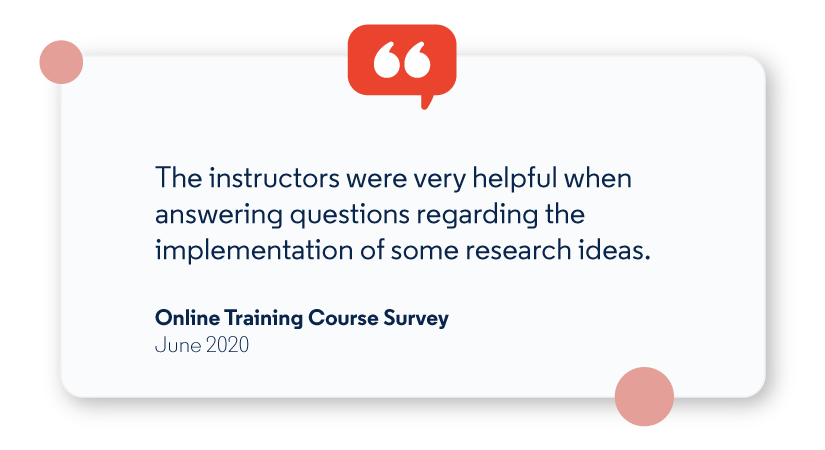
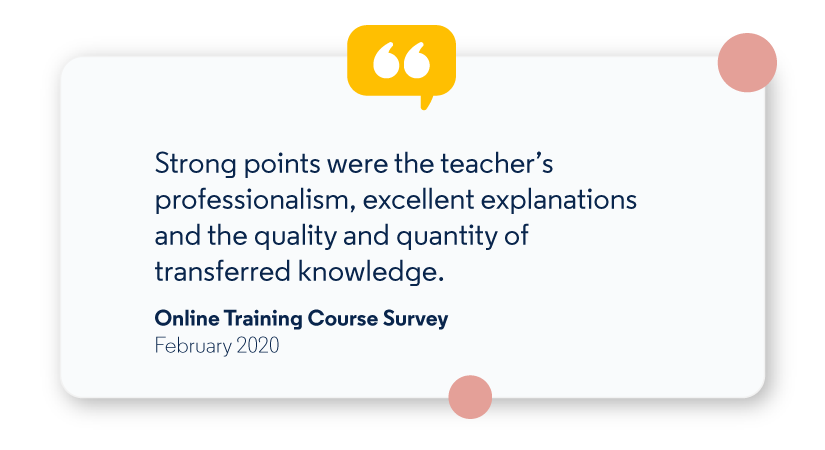
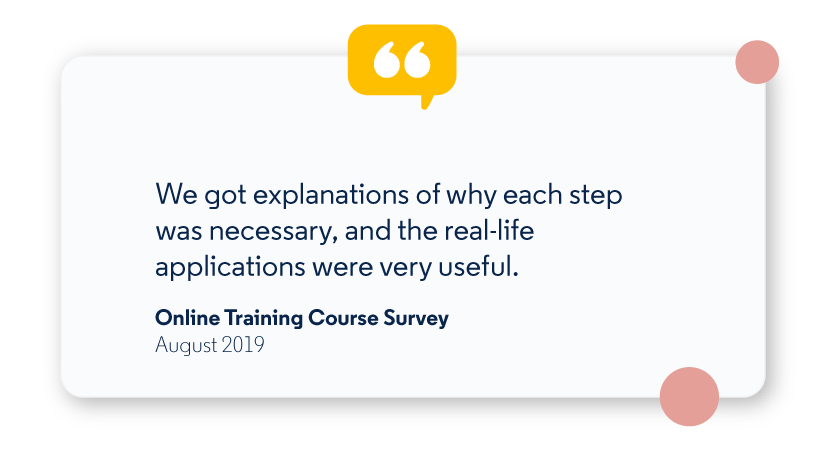
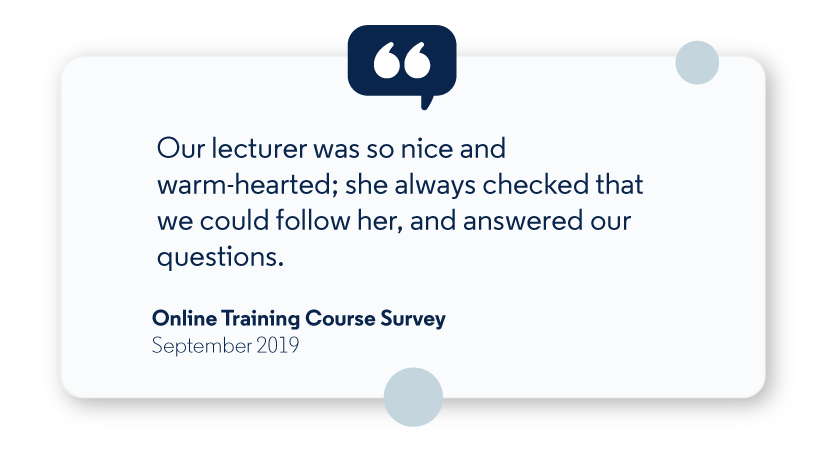
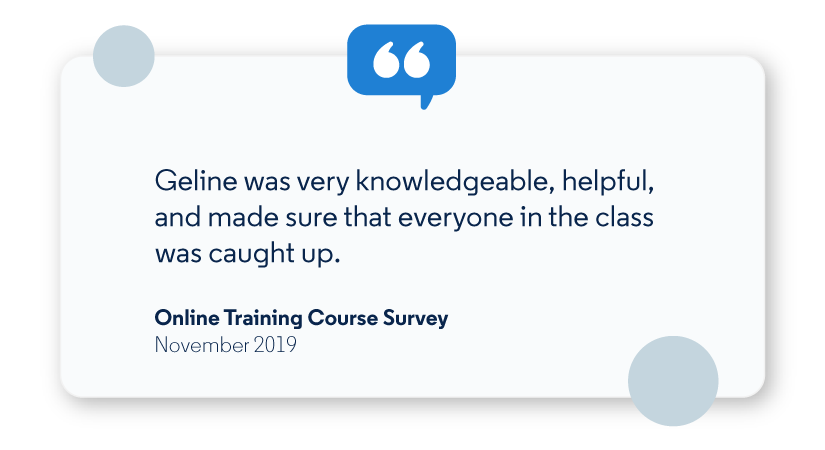
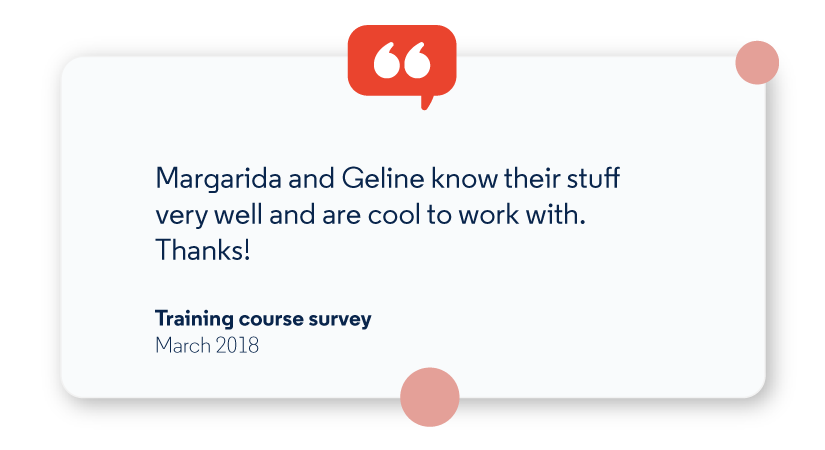
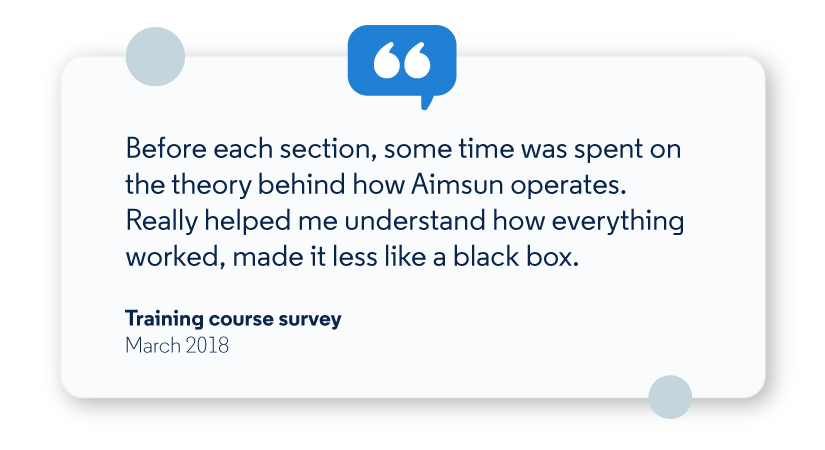
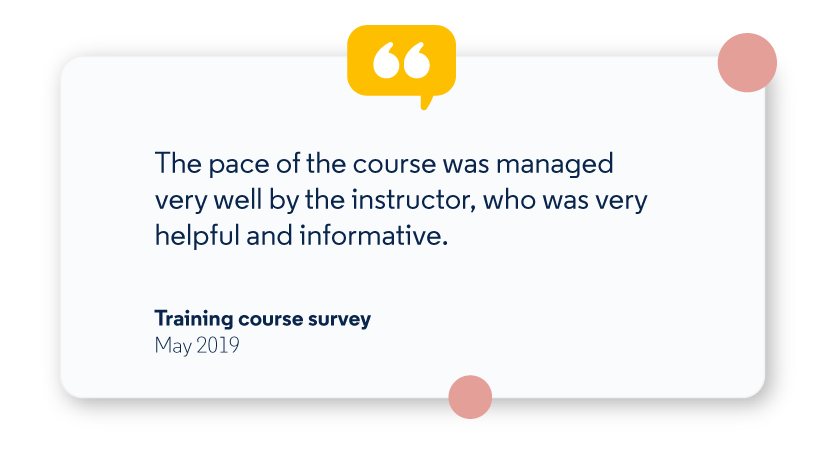
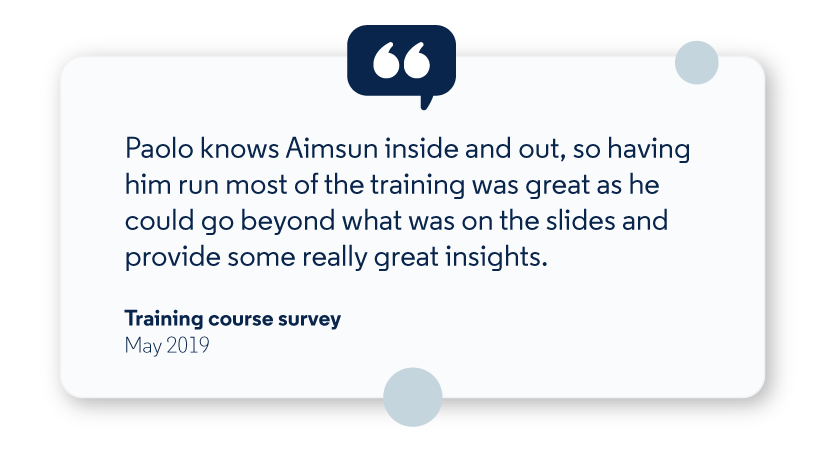
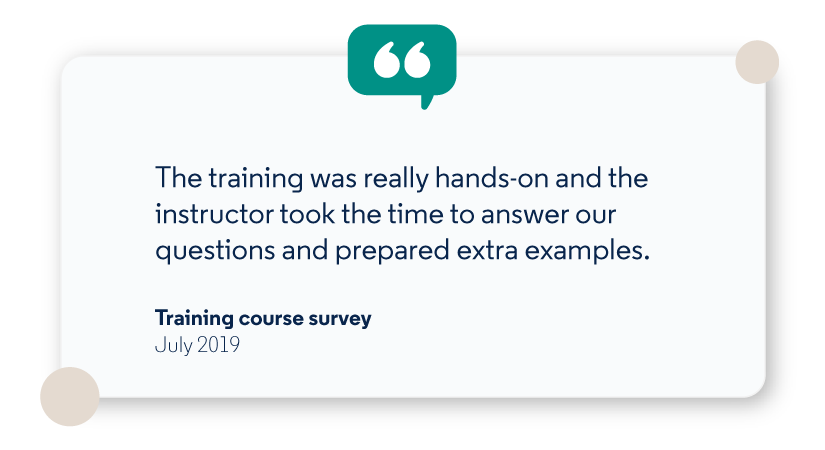
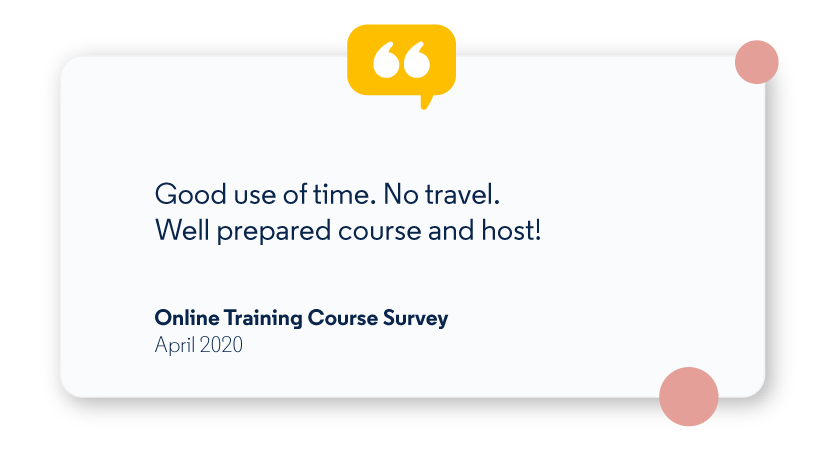
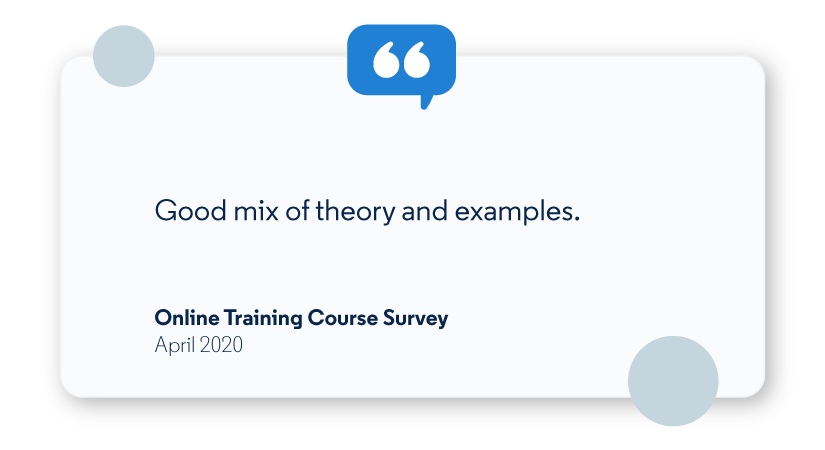
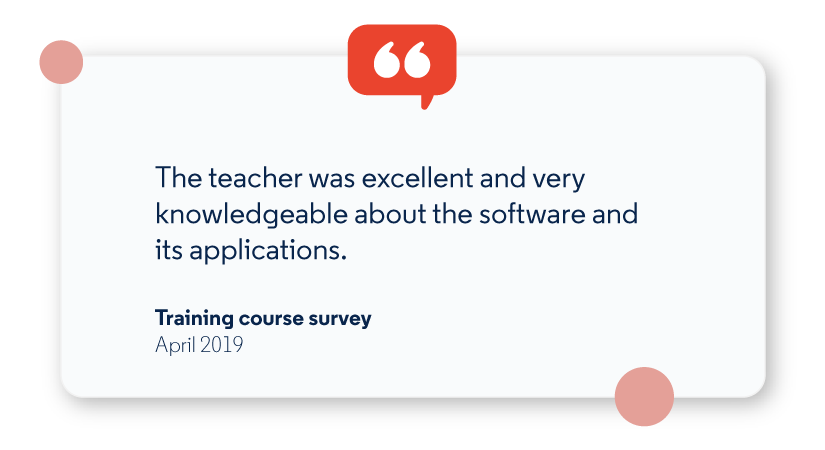
Practical information
We supply official certificates upon course completion.
Our training courses are taught online and in person, so hours can vary; see each individual course for daily start/finish times.
Available course languages are English, French and Spanish.
Beginners: If you are a complete beginner, we strongly recommend that you take the time to run through the Aimsun Next tutorials beforehand to familiarize yourself with the software.
Registration fees include instruction, training materials and temporary licenses of Aimsun Next software.
Participants use their own laptops for the coursework unless advised otherwise.
Registration is subject to availability, and full payment must be received in advance of the course. We accept bank transfers and major credit cards.
Aimsun Next Training for Beginners
About
Our beginners’ courses for Aimsun Next are offered in three modules, usually together in the same week.
The courses recommended vary based on your Aimsun Next edition.
Editions
Recommended Courses
Pro Micro
Pro Meso
Pro TDM
Advanced
Expert
Our most popular training course, this is a thorough introduction to the fundamentals of building a model in Aimsun Next, with a focus on simulation at the microscopic level.
This course will take you all the way through the workflow of a typical project, from editing to traffic management, scenarios, outputs and calibration. There are hands-on exercises every step of the way to make sure you have mastered the basic concepts and you should finish this course ready to start experimenting with Aimsun Next software.
Editing exercises
Geometry
Signal plans
Public transport
Detection data
Traffic demand
Managing scenarios
Dynamic scenarios, experiments and replications
Attribute overrides and geometry configurations
Outputs
Output calculation
Time series, thematic maps
Scenario comparison
Dynamic traffic assignment
Cost functions
Stochastic route choice algorithm and parameters
Dynamic user equilibrium algorithm and parameters
Combining paths
Microscopic network loading
Microscopic vehicle behavior
Calibration of a microscopic model
Traffic management
Traffic management actions
Modeling scheduled events
Modeling incidents and mitigation strategies
This course zooms out from microscopic simulation to look at larger scale modeling. You’ll learn about the event-based mesoscopic model and how to combine it with a more detailed time-sliced microsimulator.
Then you’ll get to experiment with static macroscopic modelling, which is often used as a preliminary step to dynamic modeling to extract the demand of a subarea from a regional model, to adjust and time-slice it, and to get an initial set of paths to warm-start dynamic assignment.
Mesoscopic network loading
Mesoscopic vehicle behavior
Calibration of a mesoscopic model
Hybrid microscopic-mesoscopic simulation
Macroscopic modeling
Static traffic assignment
Traversal demand calculation
Demand adjustment
The Strategic Modeling course covers the traditional four-step modeling process of trip generation, trip distribution, mode choice, and trip assignment.
You should finish this course with an understanding of the role of travel demand modeling and forecasting within transportation planning and of the principles of each of the four modeling steps. You’ll build a practical case and experience how input data is used, and interpret the outputs from each step.
Travel Demand Modeling the four-step model
Trip generation
Trip distribution
Modal Split
Static public transport assignment
This training course guides you through the process of simulating pedestrians in an Aimsun Next microscopic simulation. You’ll learn the basics of the social force model, how to put together all the required pieces to run a pedestrian simulation and how to manage pedestrian flows interacting with other road users in a truly multimodal way.
Next, you’ll master handling conflicts between pedestrians and motorized vehicles at signalized as well as unsignalized intersections. You’ll also learn how to make pedestrians use public transportation and how to model their choice between walking and taking public transportation. Finally, you will evaluate the pedestrian simulation, examine its different applications and learn how to extend the mobility modeling workflow (for example the possibility of using Dynamic Public Transport Assignment to get skims for the four-step model).
It’s important to note that the pedestrian model embedded in Aimsun Next is designed to increase the realism of urban studies modeling multimodal networks, so this training course is primarily aimed at practitioners and engineers with a strong focus on road networks. For modeling high-fidelity pedestrian flows inside terminals and other buildings, you’ll need to use Aimsun Next in conjunction with third-party tools, such as Legion’s pedestrian simulator.
- Applying the pedestrian model
- Preparing the model for pedestrian simulation
- Pedestrians interacting with motorized traffic
- Pedestrians interacting with public transportation
- Evaluating the model
- Pedestrian skims for upper-level modeling
Aimsun Next Training for Experienced Users
About
These are more advanced courses, designed for modelers who already have some practical experience.
Editions
Recommended Courses
Pro Micro
Pro Meso
Pro TDM
Advanced
Expert
Scripting in Aimsun Next is a powerful means of modifying a model, importing or exporting data and calculating and displaying results. This course teaches you how Aimsun Next scripts can dramatically increase your efficiency, including a full day of hands-on exercises. To take this course you will need to already have a decent level of familiarity with Python and the concepts of programming.
Please note that this Scripting course does not cover the API module and functions – the key difference to remember is that Scripting allows you to make static changes before the simulation starts or after the simulation is finished, while with API, you can make dynamic changes while the dynamic simulation is running. If you need a custom training course with regard to API, please contact us directly at info@aimsun.com.
Introduction to Python
Variables & data types
Operations
Control flow statements
Defining a function
Introduction to scripting in Aimsun Next
Applications
Creating a script
Executing a script
Using the scripting documentation
Architecture of the Aimsun platform
Aimsun Next scripting in practice – Exercises
Error-checking inputs
Post-processing outputs
Exporting data
Editing the model
Importing data
Running a simulation
Customizing cost functions
If you are ready to start building more complex models that are on a larger scale and/or that integrate micro, meso and macro levels, then this is the course for you.
We’ll take you on a detailed walk-through of the methodology and workflow for complex projects with exhaustive tuition on calibration techniques, covering behavior parameters and route calculation, as well as real data comparison techniques.
Multi-resolution modeling
Macroscopic, mesoscopic and microscopic modeling approach
Hybrid simulation
Static and dynamic cost functions
Path calculation techniques
Demand preparation
Multi-resolution modeling project workflow
Exercise
Advanced calibration of mesoscopic and microscopic models
Calibration workflow
Procedures to estimate calibration parameters from real data
Tips and techniques to troubleshoot calibration issues
Validation criteria
Importing real data
Statistic indicators to compare simulation outputs with real data
Info for Customers in France

Objectifs et Prérequis pour les différentes formations:
Objectifs:
– Maîtrisez les bases de la construction d’un modèle dans Aimsun Next, en mettant l’accent sur la simulation au niveau microscopique.
– La construction d’un projet type, de l’édition à la gestion du trafic, scénarios, sorties et calibrage.
Conditions préalables :
- Maitrise d’un ordinateur et souris
- Optionnel : Connaissance préalable du logiciel Aimsun Next (ex. Tutoriels disponible à l’installation du logiciel)
- Optionnel : Connaissance de logiciel de cartographie ou de plan (Qgis, Autocad…)
Bien qu’aucune expérience préalable avec le logiciel Aimsun Next ne soit requise pour participer aux cours pour débutants, nous recommandons aux débutants de passer en revue les tutoriels d’installation d’Aimsun Next au préalable afin de se familiariser avec le logiciel.
Objectifs:
– Vous apprendrez la modélisation mésoscopique basée sur les événements et comment la combiner avec un micro simulateur temporel plus détaillé.
– Vous expérimenterez ensuite la modélisation macroscopique statique, qui est souvent utilisée comme étape préliminaire à la modélisation dynamique pour extraire la demande d’une sous-zone d’un modèle régional, l’ajuster et la découper dans le temps, et obtenir un ensemble initial de chemins pour démarrer à chaud une affectation dynamique.
Conditions préalables:
– Compétences de base sur le logiciel Aimsun Next
– Connaître les bases de la construction d’un modèle dans Aimsun Next
– Edition
– Géométrie, Plans de feux de circulation, Transport public, Données de capacité, Demande de Trafic.
– Gestion des scénarios
– Gestion du trafic
– Chargement du réseau microscopique
– Comportement microscopique des véhicules
– Calibrage du modèle microscopique
Objectifs:
Comprendre le rôle de la modélisation et de l’estimation des déplacements à venir dans la planification des transports et les principes de chacune des quatre étapes de la modélisation. Vous serez en mesure d’effectuer une étude de cas sur l’utilisation des données d’entrée et d’interpréter les résultats de chaque étape.
Conditions préalables:
Compétences de base sur le logiciel Aimsun Next
Compétences sur le module Macroscopique
Objectifs:
– Apprendre le processus de simulation pédestre dans une simulation microscopique Aimsun Next. Acquérir les bases de la modélisation des forces sociales, apprendre à rassembler tous les éléments nécessaires à l’exécution d’une simulation de piétons et à gérer les flux de piétons en interaction avec les autres usagers de la route d’une manière véritablement multimodale.
– Apprendre comment inciter les piétons à utiliser les transports publics et comment modéliser leur choix entre la marche et les transports publics. Enfin, évaluez la simulation pédestre, examinez ses différentes applications et apprendre comment étendre le flux de travail du modèle de mobilité (par exemple, la possibilité d’utiliser la répartition dynamique des transports publics pour obtenir des écrémages pour le modèle à quatre étapes). Cette formation s’adresse principalement aux professionnels et aux ingénieurs qui se concentrent sur les réseaux routiers.
Conditions préalables:
- Compétences de base sur le logiciel Aimsun Next
- Compétences sur le module Microscopique
Objectifs:
– Le Scripting dans Aimsun Next est un moyen puissant de modifier un modèle, d’importer ou d’exporter des données et de calculer et afficher des résultats. Ce cours vous apprend comment le script Aimsun Next peut augmenter considérablement votre efficacité, y compris une journée complète d’exercices pratiques.
Conditions préalables:
- Maitrise du logiciel Aimsun Next et de ces différents modules (à minima Méso, Macro, Micro)
- Bonne connaissance du logiciel et de son fonctionnement
- Maitrise d’un ou plusieurs langages de programmation (en particulier Python)
- Optionnel: Connaissance de la programmation orientée objet
Méthodes d’évaluation:
Aucun prérequis n’est vérifié pour la formation “Compétences de base”, pour toute autre formation, un questionnaire/test écrit est envoyé avant l’inscription définitive afin de vérifier que les participants ont les prérequis nécessaires pour suivre la formation.
Méthodes mobilisées:
Nos cours peuvent être dispensés en présentiel (dans nos locaux ou dans ceux du client) ou à distance via Teams Meeting.
Modalités d’évaluation:
Réalisation de cas pratiques
Délais d’accès:
La date d’entrée en formation est définie selon les disponibilités du client et du formateur.
Accessibilité aux personnes handicapées:
Nos locaux sont accessibles aux personnes à mobilité réduite. Si vous êtes en situation de handicap ou avez des restrictions, contactez-nous au 0186954152 ou par courriel à info@aimsun.com, afin que nous puissions étudier ensemble les possibilités d’adaptation
contactez-nous au 0186954152 ou par courriel à info@aimsun.com, afin que nous puissions étudier ensemble les possibilités d’adaptation








